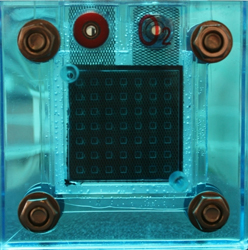Supercapacitors to provide peak power from fuel cells
Fuel cells (FCs) are energy conversion devices. They convert stored energy in fuel such as hydrogen into energy to do work (for example, to power a small machine). Conversion is a one-step process, making FCs much more efficient than typical combustion devices. They have very few moving parts, a unique feature contributing to enhanced reliability, decreased maintenance costs and almost negligible noise. They also offer the potential to relieve the pressure, instability and cost of the fossil fuel market as well as provide a sustainable and clean form of renewable energy. One of the major stumbling blocks to more widespread implementation in small, portable devices is significantly reduced lifetime in the face of variable loads. Given that most real loads are variable (for example power peaks when starting), commercial viability is strongly tied to enhancing durability of FC components under such conditions. European researchers initiated the ‘Flexible ecological multipurpose advanced generator’ (FEMAG) project to develop a novel energy generator. The design integrated a FC with supercapacitors to handle power peaks and thus enable a durable and flexible power supply for small, portable non-automotive devices. Capacitors, those tiny little components ubiquitous on printed circuit boards, are charge-storage devices. Supercapacitors are capable of storing thousands of times more energy than a conventional capacitor. They are used in conditions of rapid charge-discharge cycles involving high currents of short durations. FEMAG system architecture relied on supercapacitors to meet peak power loads, the FC for normal steady-state operating conditions, a back-up battery when power demand exceeded FC maximum capability and an intelligent converter that switched among the components depending on load conditions. Scientists developed two prototypes, a low-energy one for instalment on a wheelchair and a medium-energy one for automated guided vehicles (AGVs). FEMAG technology has a very promising future. The consortium identified 20 potential applications and prepared designs for each one. In the near future, hydrogen-based generators for low-cost, portable applications may be a competitive alternative to today’s power generator.







